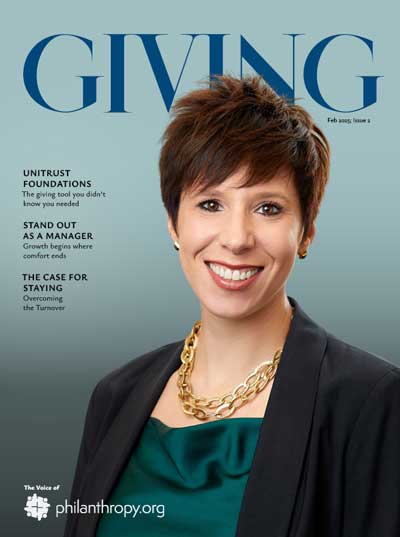For nonprofits, the word “brand” might feel like it belongs to the corporate world. But in truth, a nonprofit’s brand is its identity—it is the story it tells, the mission it seeks to fill, the trust it builds, and the way it inspires people to care and contribute. As Kevin L. Brown, a nonprofit consultant, explains, “A well-crafted brand communicates credibility, which is critical in cultivating trust with donors and stakeholders.”
Whether it’s raising more money, fostering trust, or securing long-term support through planned giving, a strong brand lays the foundation for everything a nonprofit does.
That’s why your nonprofit’s brand needs to be more than just an afterthought—it needs to be front and center, in everything you do.
How Branding Helps Raise More Money
When people give to a nonprofit, they’re not just making a financial transaction. They’re making an emotional investment. Michele Benson, an expert in nonprofit communications, puts it simply: “Donors want to know their contributions make a difference. A strong brand reassures them of your organization’s ability to deliver results.”
A clear, compelling brand can make all the difference when it comes to attracting and retaining donors. Here’s why:
- Consistency Builds Confidence: When your message is clear and consistent across all platforms, donors feel they can rely on you.
- Emotion Drives Action: People are moved to give when they feel a personal connection to your mission. Your brand helps tell the stories that inspire them.
- Professionalism Attracts Support: A polished and professional image reassures donors, especially major ones, that their money is in good hands.
In today’s digital world, having a strong, clearly recognizable brand also makes it easier to reach new supporters through social media and online campaigns.
Trust and Authority: The Cornerstones of Philanthropy
Jim Langley, a leader in nonprofit fundraising, has said that “Trust is the currency of philanthropy.” Without trust, donors won’t give, and partnerships won’t form. Trust and authority aren’t built overnight—they grow from a combination of transparency, authenticity, and consistent impact.
How does a brand help nonprofits to build trust and authority?
- Transparency Matters: When you openly share your impact, financials, and success stories, it builds trust. People believe in your mission.
- Stories Connect: Sharing real stories about the people and communities you help makes your work relatable and memorable.
- Visible Leadership Inspires Confidence: Donors want to see leaders who are passionate, approachable, and committed.
A strong brand doesn’t just help nonprofits raise money—it positions them as thought leaders and trusted partners. That kind of authority can lead to game-changing opportunities, like media attention or major funding partnerships.
Planned Giving: The Ultimate Vote of Confidence
Planned giving—where donors gift a portion of their estate or assets to a nonprofit—is one of the most powerful ways to ensure long-term sustainability. But it requires trust, and trust requires a strong brand.
Viken Mikaelian, a planned giving expert, puts it best: “When donors consider leaving a legacy gift, they want to feel certain their contributions will make a lasting impact. A strong brand ensures your nonprofit is a trusted steward of their legacy.”
Planned giving is deeply personal. It’s not just about money; it’s about values. A nonprofit’s brand plays a key role in showing donors how their legacy will live on through the organization’s work.
As Jim Langley explains, “Planned giving transcends transactions; it cements partnerships between donors and nonprofits, rooted in shared values and trust.” A thoughtful brand that reflects those values can inspire donors to make such lasting commitments.
Why Your Brand is Your Greatest Asset
A nonprofit’s brand isn’t just a logo or a tagline—it’s a promise. It’s a way of showing donors, volunteers, and the communities you serve who you are, what you stand for, and what you can achieve together.
As Michele Benson reminds us, “A nonprofit’s brand is not just a reflection of who they are, but a promise of what they can achieve.”
By investing in their brand, nonprofits can raise more money, build deeper trust, and inspire donors to leave a lasting legacy. In today’s crowded nonprofit world, a strong brand isn’t just nice to have—it’s essential.







[…] why successful nonprofits invest in marketing and brand-building. It’s not just about making your name known—it’s about helping people understand what you do […]
[…] trust and authority, both of which are essential for fundraising. As Kevin L. Brown from Philanthropy.org explains, a clear and compelling brand inspires confidence and creates a foundation for everything […]